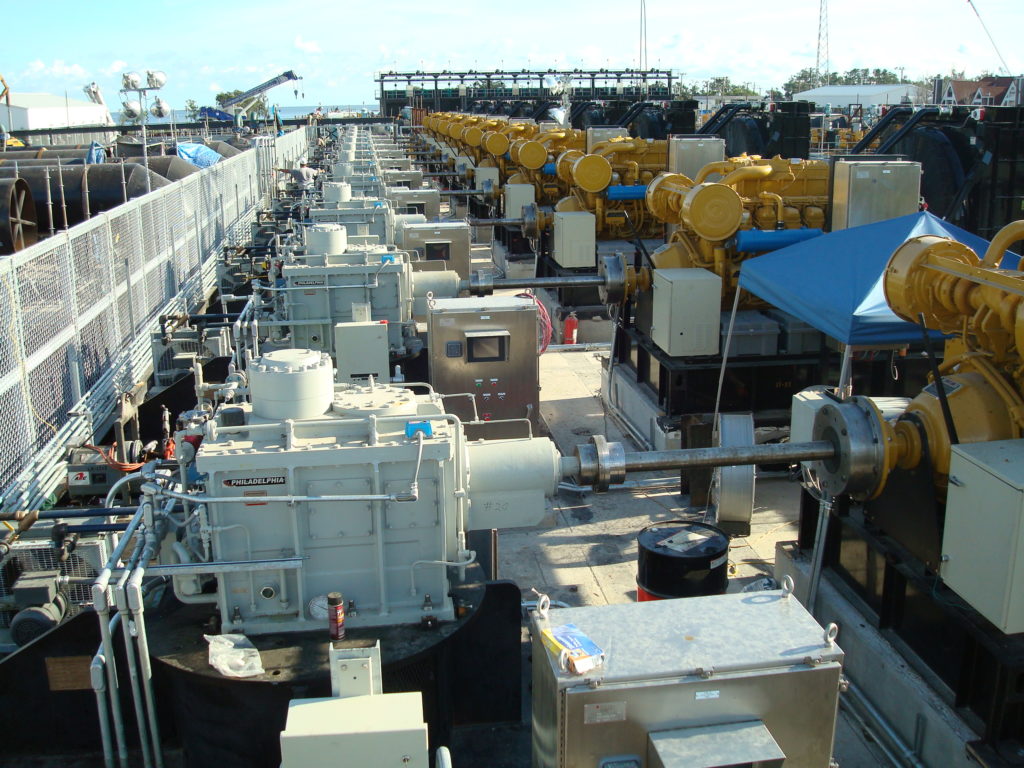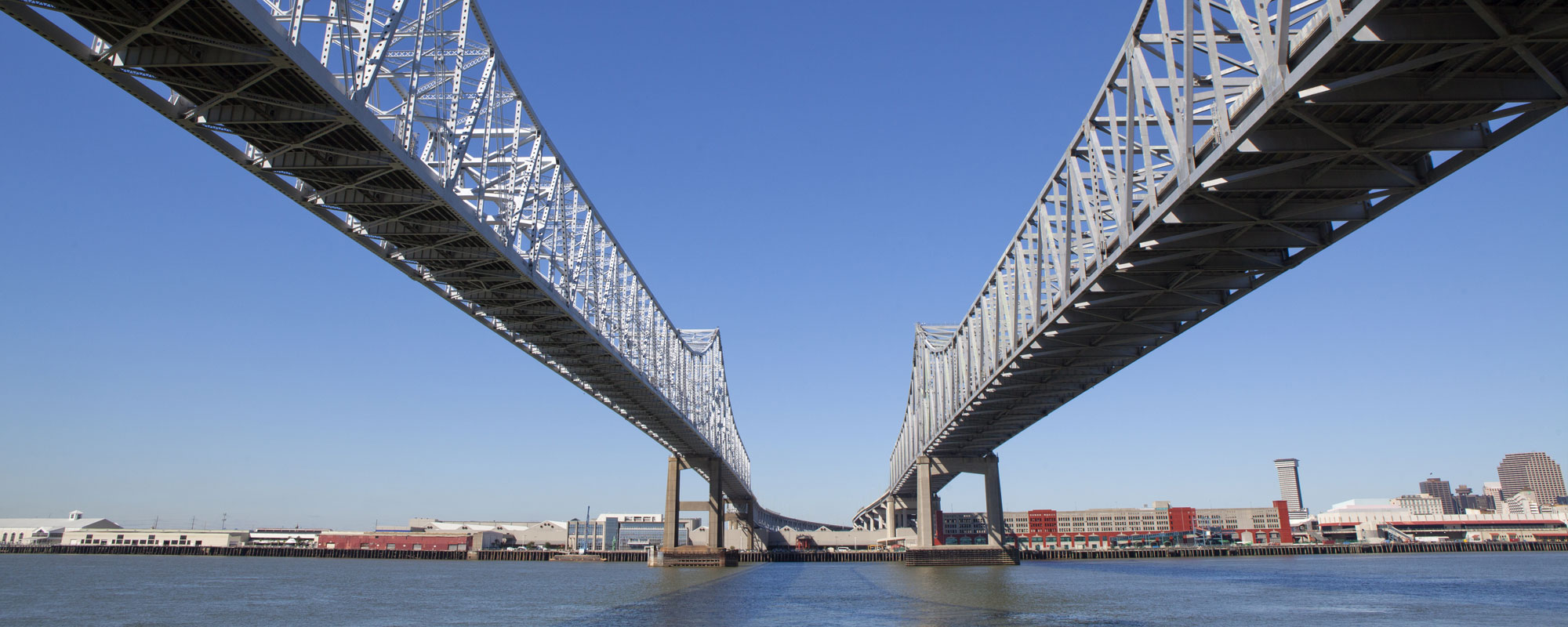Case Study
Storm Water Management: New Orleans, Louisiana
The Project:
U.S. Army Corp of Engineers Pump Station Upgrades
New Orleans, Louisiana
New Orleans is surrounded by Lake Pontchartrain to the North, the Gulf of Mexico to the South, and the Mississippi River running through the city. Without pump stations, the area could flood with only one inch of rainfall.
Since Hurricane Katrina in 2005, billions have been invested in new and refurbished pump stations to prevent another catastrophic flood. Philadelphia Gear by Timken applies 130 years of power transmission expertise to customize solutions for 200+ pump stations protecting the region’s 1.3 million residents.
The Challenges
Philadelphia Gear systems transmit power between a driver — like an electric motor, gas or diesel engine — and a pump. Moving stormwater requires great power input at high speeds, then a reduction of power and lower speeds so water can be safely siphoned where it needs to go.
New Orleans’ large pump stations are each configured differently based on topography, pumping requirements and technology available at the time of original installation. While this requires customized designs for every gear drive system, common challenges are:
#1: High operating pressures. In many cases, New Orleans’ low elevation means stations must pump water to defy gravity, moving water horizontally or vertically, upwards. This increases torque, vibration and wear.
#2: Extreme lifecycle and service factor requirements. Pumps do not run continuously—they operate intermittently only during heavy rains and storms that create flood conditions. Yet operators must keep city populations safe and count on good investment returns. So, gear drives must be overdesigned to potentially perform for 50 to 70 years.
#3: Corrosion and premature failure if gear drives become submerged. Corrosion damage can occur within 24 hours of a gear drive drying out after being submerged in flood waters.
The Solutions:
Philadelphia Gear first equipped New Orleans pump stations in the 1920s and helped modernize the city’s pump station network from the 1960s through the 80s, and again immediately following Katrina. Today, the company designs original, custom gear drives for new pump installations and repowers existing gear drives to meet the U.S. Army Corp of Engineer’s evolving design criteria.
“We have all our original drawings and technical data from 100 years ago,” says Gayle Quinlan, director of original equipment sales for the water management market. “We are the only gear drive supplier that can retrieve that kind of information and use it to engineer an upgrade based on the latest engine and pump requirements.”
Quinlan counts the following examples among Philadelphia Gear’s most significant contributions to New Orleans’ flood mitigation:
#1: Custom gear reducers for Harahan Pump to the River project. Before this project completed in 2017, storm water in river-adjacent neighborhoods had to travel seven miles before being pumped into Lake Pontchartrain. The U.S. Army Corp of Engineers commissioned a more efficient, first-of-its kind system to pump the water directly over a levee and into the river. The system handles up to nine inches of rain in a 24-hour period.
Philadelphia Gear custom-designed three double-reduction, right-angle gear reducers with redundant lubrication, monitoring and instrumentation systems to protect the system in the event of equipment failure — and provided technical support during an extended start-up period.
#2: High-performance gear drives operated while submerged following Hurricane Katrina. Philadelphia Gear-equipped pumps at Station 19, constructed 16 years earlier, were the last in operation after the storm. “They ran with our units completely under water for three weeks to help drain the city,” remembers Quinlan. “They were subjected to great pressures being located at one of the lowest natural drainage points and still operated with no problems.”
Philadelphia Gear helped siphon and inspect the units, and later refurbished them to like-new condition. These units are still in service today and withstood Hurricane Ida in 2021.
#3: System upgrades to support large repower projects. The Elmwood Pump Station, one of New Orleans’ oldest and largest, was modernized in 2019. Philadelphia Gear upgraded all gearing, bearings and lubrication systems to meet new engine rate and ratio requirements on all eight pumps.
Company engineers continue to help the U.S. Army Corp of Engineers with fortifying pump stations against catastrophic storm damage. “We make upgrades as a result of their upgrades,” Quinlan says. “If they lengthen discharge piping it requires greater pumping capacity, which means more powerful engines and different gearing. We can usually make upgrades within the existing design envelope.”

The Benefits
#1: Reliability. Quinlan, who plans to retire next year, recently inspected original gear drives installed at a pump station built before she was born. The units still ran properly but were scheduled for a repower. Gear drives for water management are routinely engineered to operate without failure for up to 70 years.
#2: Efficiency. During a hurricane, every second counts. Pumps must move water quickly to prevent flooding and maintain road access for first responders. “We can bend power in any direction with right-angle, horizontal and vertical gears for more efficient design and operation,” Quinlan says. “We are not limited by ratings, power or direction. That’s unique to our business.”
#3: Cost Effectiveness. Efficient and reliable gear drives reduce maintenance costs and help prevent expensive flood damage. Because Philadelphia Gear units retain their integrity even after decades of operation, repairing and upgrading them is an economical alternative to purchasing new units.
The Results
Philadelphia Gear continues to work with the U.S. Army Corp of Engineers on pump station upgrades. With such a vast and capital-intensive pump station network, repowers take time, resources and significant funding.
In some cases where other gear drive suppliers managed repower projects, the U.S. Army Corp of Engineers ultimately asked Philadelphia Gear to replace the equipment, again.
“We have one instance where we’re replacing equipment that’s only been in for three years,” Quinlan says. “They called us because they know we have the history and the capabilities to make it right. And with the addition of our electrical skillsets, we’ve expanded the scope of what we can do for the Army Corps and our municipal installed base.”
___________________________________________________________________
Learn more about Philadelphia Gear’s expertise in water management here.
Gayle Quinlan explains how Philadelphia Gear drives from Timken help support the preservation of one of the world’s largest wetlands ecosystem: The Florida Everglades.
Last Updated: 2022/04/15
Published: 2022/03/7
